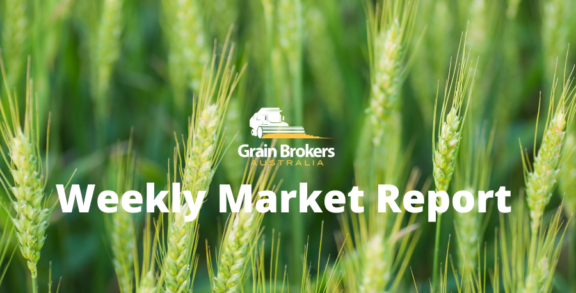
A change of government in Brazil at the end of October has paved the way for corn exports to China to commence as early as December. In a move that will undoubtedly reshape global trade flows, China has accelerated clearance of the final phytosanitary hurdles at a time when the war in Ukraine has disrupted worldwide trade and tensions with the US, its leading corn supplier, are escalating.
Former Brazilian president Lula da Silva survived a late surge from far-right incumbent Jair Bolsonaro in the second round of voting after neither candidate won the required 50 per cent of the vote in the first round early in October. Nevertheless, Lula, as he is popularly known, will inherit a divided country with the two-man runoff an unexpectedly tight contest. Lula won with just 50.9 per cent of the vote, or around 2.1 million ballots ahead of Bolsonaro.
While Bolsonaro embraced China in the last 18 months of his presidency, some decisions in the first two and a half years of his term angered Beijing. Foremost among those was the Bolsonaro government’s attempts to exclude Chinese telecom equipment maker Huawei Technologies from the bidding process for the development of the country’s 5G communications network. Both Canada and Australia took a similar stance, to the detriment of their respective agricultural trade volumes with China.
A proud disciple of Trump, Bolsonaro was forced to make a pragmatic pivot toward China for fear of political isolation when the former US president left office in January 2021. However, China’s President Xi Jinping has a long memory. Rumours have been rife that Bolsonaro’s departure was required before the final door would be opened to corn trade between the world’s second-largest economy and the world’s second-largest corn exporter.
China’s General Administration of Customs updated its list of approved facilities and traders on Wednesday of last week, adding around 100 Brazilian traders, co-operatives, storage facilities and export terminals to the original list of 45 authorised entities released in mid-October. To the relief of market participants, the latest update is far more comprehensive after the first list contained only three port terminals. And once Beijing adds an entity to the approved list, those companies are free to negotiate directly with corn buyers in the Asian powerhouse.
China and Brazil originally signed a corn export protocol back in 2014. But China’s complex inspection demands stood in the way until Russia’s invasion of Ukraine abruptly halted supplies from the Black Sea. A revised deal was inked in May outlining the sanitary requirements related to grain imports, including an update to quarantine rules. Exports were initially planned to commence in the 2022-23 crop year, but in August, the two parties agreed to relax the requirement for on-farm controls for corn that had already been harvested during the 2021-22 crop year.
This decision initiated the process of inspecting facilities that had applied for the phytosanitary certificate necessary to export corn to China. Under the quarantine protocol signed by the two countries, Brazil must prove that none of the 18 listed pests contaminate corn export cargoes. All that was left was final approval from the Chinese government, a step that appears to have been expedited once Bolsonaro’s fate became certain.
Brazil’s agriculture ministry has received around 600 certification requests. Among the export terminals approved thus far are facilities owned by Interalli, Cargill, Rocha and Bunge at the port of Paranagua, facilities owned by Amaggi and Viterra at the port of Itaqui and five facilities at Santos. The list is expected to be updated regularly as the inspection work continues and reports are submitted to Beijing.
With the trader, storage and export facility approvals now in place, smaller test shipments are expected to commence quite quickly, with deliveries to Chinese ports possible before the end of December. This will smooth the path for much larger shipments once the new crop harvest commences in early 2023.
This move seriously threatens the US share of Chinese corn purchases, which totalled about 70 per cent in the 2020-2021 season. The other 30 per cent came from Ukraine. China already buys most of Brazil’s soybeans to process through its massive crush network. A key by-product is soybean meal, which, like corn, is an essential feed ingredient for its burgeoning hog herd. The Asian nation has a history of shifting away from US agricultural supplies at a time of escalating tensions, which was seen most recently during Trump’s trade war in 2018-19. China also has a broader goal of reducing reliance on single suppliers.
Brazil currently ships most of its corn to Egypt, Iran, Japan, Spain and Vietnam. The latest export approval is likely to see shipments to China increase dramatically at the expense of these traditional destinations. Additionally, in the current geopolitical environment, China will have a political desire to buy more corn from South America and less from the United States. In a shuffling of the trade cards, this is likely to see Brazil’s traditional customers turn to the United States as a supply alternative, at least for a portion of their annual requirements.
Meanwhile, China’s corn imports in September came in at 1.53 million metric tonne, down 18 per cent from 1.8MMT in August but down a massive 56.6 per cent compared to September last year. Total corn imports for the first three quarters of calendar year 2022 reached 18.46MMT, down 25.9 per cent on the same period in 2021. The USDA has China pencilled in for 18MMT of corn imports in the 2022/23 crop year beginning October 1.
Brazil’s ability to take advantage of this enormous export opportunity will depend greatly on the weather and a recovery in corn production this season. The globe is now in the grips of a third consecutive year of La Nina. When this weather phenomenon breaks down will be critical, as will the onset of the 2023 dry season. If the dry season starts early or the safrinha crop, which accounts for 75 per cent of production, is planted later than its typical January to February window, the probability of dry weather negatively impacting yields increases dramatically.
Call your local Grain Brokers Australia representative on 1300 946 544 to discuss your grain marketing needs.





